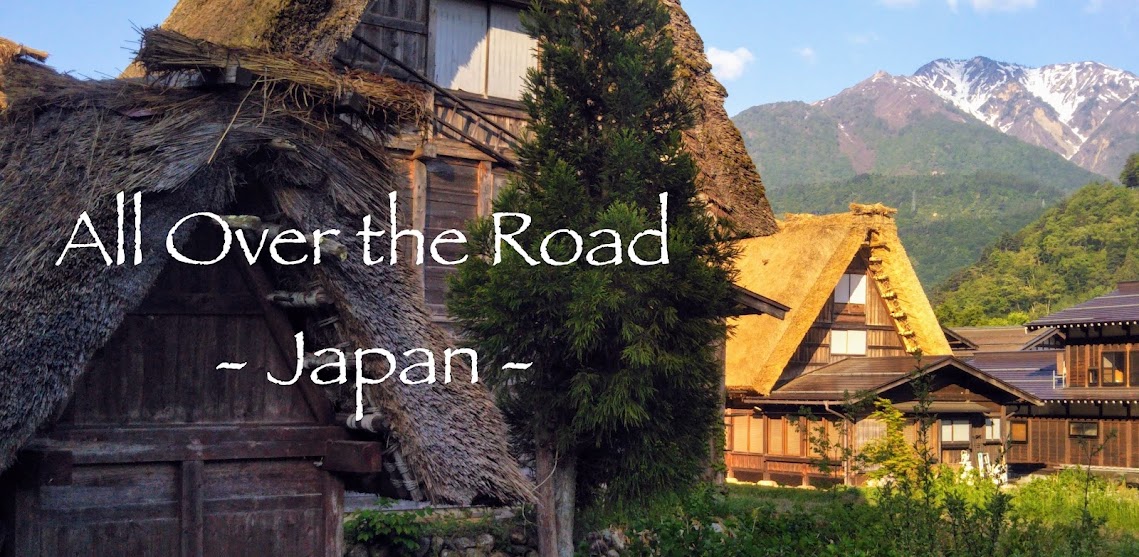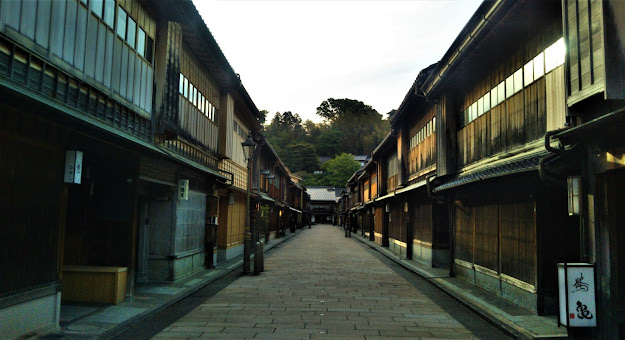The Noto
Peninsula looks like a hitchhiker’s thumb that has been run over a couple of
times. Hilly in the middle and lined with some of the country’s most varied and
alluring coastline, this quiet, crooked, 75-mile spit of land sticking out into
the Sea of Japan is littered with treasures that demand
time and effort if they are to be enjoyed.
One of
these treasures is Soji-ji Soin, a Zen Buddhist temple born from pursuits of benevolence, raised in juvenile conflict, and now standing with long-time rival Eihei-ji at
the center of the largest school of Zen Buddhism in Japan.
The Costs and Rewards of Being Nice
In 683 a fifteen-year-old boy named Gyōki traveled from his
home in the Kawachi Province (near present-day Osaka) to Nara’s Asuka-dera, one
of Japan’s oldest temples, to begin his life as a monk. Twenty years later he
returned home to share the teachings of Buddhism while actively practicing what he preached: with the help of an army of volunteers, Gyōki built nearly
fifty Buddhist monasteries and nunneries that doubled as hospitals for the poor.
From
there Gyōki and his followers began roaming
the countryside, bringing Buddhism to people who had only ever known Shinto;
building more temples (which also served as community centers); and spearheading
public works projects (irrigation systems were his thing).
Sounds like a great guy to have
around – unless you are the government and can’t handle monks doing anything outside
the walls of their monasteries because hey that is against the law and besides who
wants robed men freely walking the city streets being nice to people without authorization?
 |
'Kyo-zo' - The Sutra Depository
|
Gyōki bypassed the government's childishness by going out and raising hell wherever he pleased as an unofficial, private monk. This bent the local officials all out of shape, raising cries of damnation for him not being registered as a Buddhist priest on some list at some sham bureaucratic entity called the Office of Priestly Affairs.
Power to the people, Gyōki beat the
beat-down thanks to his popularity among the commoners not to mention his skill in
developing public works. (Then, as now, it seems, citizens were only as good as
their usefulness to the government.)
 |
| The 'San-mon' Temple Gate |
Among
the temples Gyoki built was Morooka-dera, a Shingon Buddhist temple that actually sat on the grounds of a Shinto shrine, Morooka Hiko Jinja.
Once called Tetsukawa-jinja, Morooka Hiko Jinja sat way out in the sticks, up where
the thumb of Noto bends east.
Over the years Morooka-dera grew, and by the end
of the 13th Century it had built up enough mojo to afford a full-time
priest and a master ajari whose task it was to teach students the Way of Furthering the Mojo.
In 1321
the shrine was moved a couple of kilometers west, noticeably closer to the beach. The ajari at the time was a priest (and, rumor has
it, an avid surfer) named Joken. So excited was he to live closer to the break
that when he moved to the shrine's new digs he forgot all about Morooka-dera, leaving it behind for a monk
named Keizan Jōkin to deal with.
Upon inheriting Morooka-dera, Keizan turned it into a Soto Zen temple, renaming
it Shogakuzan Soji-ji.
In 1322 Emperor Go-Daigo, in all his Imperial magnanimity, bestowed upon
Soji-ji the honorary title of chokuganjo, meaning a temple built at the request
of the emperor – which, according the math, is bullshit.
 |
| The Dento-in, the most sacred building of Soji-ji, preserves the spirit of Keizan. |
The Creation of a Soto Zen Master
Keizan Jōkin was, according to records,
born in 1268, exactly six hundred years after Gyoki. Unlike Gyoki, Keizan didn’t
wait until his teenage years to get his Buddhist mojo on. How could he? First of all, his mother Ekan was the founder
and abbess of Jōju-ji, a temple of Soto Zen, a school of Buddhism derived from teachings brought to Japan from China by a
monk named Dōgen. She was an active proponent of teaching Buddhism to women,
and as such was also a fan of Kannon, the Buddhist Goddess of Mercy.
Busy as Ekan was, founding Jōju-ji
and another temple, Hōō-ji, it fell to Grandma Myōchi to take care of Keizan during his youngest years. Like Ekan, Myōchi was hooked on Soto Zen. This one-two punch of devout Buddhist influence led Keizan to quickly embark on his own road to monkhood, entering the temple
of Eihei-ji at the grizzled old age of eight.
The aforementioned Dōgen had traveled to China in search of a better brand of Buddhism, and found it in a man named Rujing. Dōgen returned to Japan around 1227 and tried to assimilate what he
learned in China into the current Buddhist teachings. Kyoto, however, was
at the time overrun by holy robes entrenched in their Tendai school of
Buddhism, and Dōgen was less than welcome to show up and tell everyone to start
practicing zazen.
After a time he left, and in 1244 established Eihei-ji temple
in the Echizen countryside near present-day Fukui. Eihei-ji would thus become the
head temple of the new and growing Soto school of Zen.
 |
| The Butsu-den, where the Buddhist deity Shakamuni-Nyorai is enshrined. |
But not
for long. Keizan had already founded another Soto temple, Yoko-ji, and the priests there were basically fighting the priests of Soji-ji for spiritual preeminence. (Fighting may not be the right word.
I can’t imagine a bunch of bald men in flowing robes brawling.) (Actually yes I
can. It’s kind of funny.)
Over
time Soji-ji won out, having grown its influence through the monks’ practice of
traveling the countryside and bringing small village temples from (usually)
Shingon and Tendai over to the Soto mojo, much like Gyoki did six centuries prior.
Meanwhile
Soji-ji was also competing with Eihei-ji, which perhaps rightfully considered
itself the true head of Soto Zen since it was established by Dōgen, father of the
Soto school. But the monks of Eihei-ji carried out their teaching of
and instruction in Buddhism strictly within the confines of their temple. Once again, with Keizan's priests out there pounding the dirt paths of the surrounding countryside, Soji-ji’s mojo spread further across the region.
Dōgen’s death in 1253 led to infighting over who should assume
abbotship (i.e. control) of Eihei-ji. The pillow fights went on for two centuries until 1468 (exactly eight hundred years
after Gyoki’s birth, and exactly two hundred years after Keizan’s) when the lineage
of Keizan’s Soji-ji took over Eihei-ji. This would make Soji-ji the Grand Poobah of the thousands of Soto Zen temples now spread throughout Japan.
By the
end of the 16th Century Soji-ji was officially recognized by the Imperial Court
as Japan's head Soto Zen Buddhist temple. Yet the slap fights between Soji-ji and Eihei-ji would continue, until the Meiji Restoration (and the end of meaningful imperial
influence) brought a sort of truce. It was agreed, at least on paper, that Soto Zen Buddhism would follow the maxims of Dōgen and the inspiration of Keizan, and Soji-ji and Eihei-ji would stand as equals at the head of what had become Japan's largest school of Buddhism.
Soji-ji
was completely destroyed by fire in 1898. The temple was rebuilt in 1911 in
Tsurumi, Yokohama, to bring more of that Soto mojo to eastern Japan. The Soji-ji
here in Noto remains a training ground for Soto monks, and is called
Soji-ji Soin, the ‘father’ temple.

For all its history and aesthetic allure, Soji-ji Soin rarely makes it onto anyone's list of must-see places. Must have something to do with its location out in the boondocks of Noto. But as a part of an exploratory expedition around the peninsula it's worth seeking out.



























